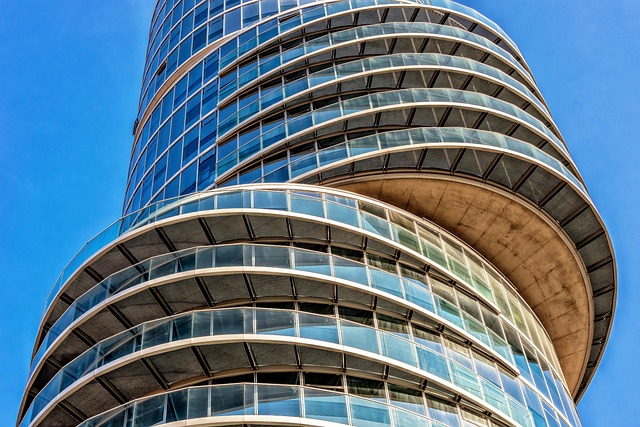Marsiling Ridge is a significant geographical feature in Singapore, serving as a key ecological preserve and transport nexus. Strategically located, it links important districts like Marsiling Planning Area and Woodlands Regional Centre, contributing to the urban landscape's functionality while offering scenic views. Its proximity to major transportation corridors such as the North-South Corridor and the upcoming Cross Island Line MRT station highlights its importance for commuters and nature enthusiasts alike. The Ridge's integration into Singapore's urban framework demonstrates a commitment to maintaining biodiversity and improving urban mobility, with future projects aimed at enhancing its connectivity with surrounding areas. Marsiling Ridge is central to ecological conservation and transportation networks within the island, emphasizing its dual role in supporting both environmental and urban development objectives.
Marsiling Ridge stands as a pivotal landmark poised to redefine urban connectivity within Singapore’s vibrant districts. This article delves into the strategic positioning of Marsiling Ridge, highlighting its significant role in facilitating seamless transportation between key areas. Situated with easy access to major MRT stations and interconnected by an extensive network of roads and expressways, Marsiling Ridge is set to become a central node in the region’s transport framework. We will explore the existing and future connectivity enhancements, including road network intricacies, public transportation advancements, and planned infrastructure projects that underscore its pivotal role in urban development. Additionally, we will examine how Marsiling Ridge’s integration into Singapore’s urban fabric mirrors successful models elsewhere, and project its potential to link with burgeoning economic and commercial hubs, ensuring its status as a cornerstone of regional connectivity for years to come.
- Marsiling Ridge and its Strategic Location
- – Overview of Marsiling Ridge's geographical significance
- – Proximity to major transportation hubs like Marsiling MRT Station
- – Connectivity to key districts via major roads and expressways
Marsiling Ridge and its Strategic Location

Marsiling Ridge occupies a pivotal position within Singapore’s extensive network of natural and man-made geographical features. Strategically situated to facilitate connectivity between key districts, this ridge serves as a vital link in the urban landscape, offering both ecological and transportation benefits. Its elevated terrain provides a unique vantage point that overlooks surrounding areas, including the Marsiling Planning Area and Woodlands Regional Centre, enhancing regional planning efforts and offering panoramic views. The proximity of Marsiling Ridge to major transport nodes like the North-South Corridor and the upcoming Cross Island Line MRT station underscores its importance as a hub for both commuters and nature enthusiasts. This strategic location not only aids in the seamless movement of people within the region but also supports the preservation of biodiversity, highlighting the Ridge’s dual role as a green lung and a transport artery within Singapore’s urban framework. The connectivity initiatives planned for Marsiling Ridge are set to further integrate it with surrounding districts, ensuring its continued significance in both environmental conservation and urban mobility.
– Overview of Marsiling Ridge's geographical significance

Marsiling Ridge, a linear feature that stretches across the northern region of Singapore, holds significant geographical importance as a natural landmark and a key component in the country’s environmental conservation efforts. As a strategic elevation, it plays a crucial role in the urban biodiversity network, providing habitats for various species and serving as a green lung within the city. The ridge’s topography and vegetation are instrumental in moderating microclimates, offering ecological corridors, and contributing to the overall landscape’s resilience against climate change. Its connectivity to key districts such as Woodlands, Yishun, and Sembawang is essential for promoting sustainable urban development and ensuring that these areas remain accessible while maintaining their natural integrity. The integration of Marsiling Ridge within the broader transportation and ecological planning is a testament to Singapore’s commitment to harmonizing environmental conservation with urban growth.
– Proximity to major transportation hubs like Marsiling MRT Station

Marsiling Ridge, a strategic geographical feature in Singapore’s northern region, presents a unique opportunity for connectivity with key districts through its proximity to major transportation hubs. The area benefits significantly from its close vicinity to the Marsiling MRT Station, which is a pivotal node within the country’s extensive Mass Rapid Transit (MRT) network. This station serves as a crucial link facilitating swift and efficient travel to various parts of Singapore, including the Central Business District and Changi Airport. The seamless integration of Marsiling Ridge with this transport hub not only enhances the accessibility of the region but also supports its economic development and integration with broader urban planning objectives. Additionally, the area’s connectivity is further bolstered by nearby major roads, which ensure smooth vehicular movement to key districts, fostering both trade and mobility within the city-state. The strategic positioning of Marsiling Ridge, in relation to these transportation assets, underscores its potential as a vibrant hub for commerce, education, and community living.
– Connectivity to key districts via major roads and expressways

Marsiling Ridge offers robust connectivity to a myriad of key districts across Singapore, facilitated by an extensive network of major roads and expressways. The region is strategically linked to the Central Business District (CBD) and various residential areas through arterial routes like the Bukit Timah Expressway (BKE) and the Kranji Expressway (KJE). Commuters benefit from swift access to the north-south corridor, which includes the Pan Island Expressway (PIE), providing seamless travel across the island. Additionally, the Marsiling MRT Station on the North-South Line ensures efficient public transportation options, complementing the road network and enhancing the region’s overall connectivity profile. This integration of infrastructure not only supports the daily commute but also bolsters economic activities by fostering easier movement of goods and people to and from key districts such as Woodlands, Ang Mo Kio, and Orchard Road.
The connectivity of Marsiling Ridge is further augmented by its proximity to the Second Cross Island Line (CRL2) upon completion, which will serve as another vital public transport link to various parts of Singapore. The strategic placement of Marsiling Ridge along major transportation corridors ensures that it remains a key node in Singapore’s larger urban mobility framework, ensuring continued accessibility and integration with the country’s growth and development initiatives. This is particularly important as the region experiences increased urbanization and the demand for efficient mobility solutions rises.
Marsiling Ridge stands as a pivotal link between vibrant communities and the heart of Singapore’s transportation network. Its strategic location and seamless connectivity to major districts via the MRT and key roads like the Bukit Timah Expressway (BKE) and Central Expressway (CTE) underscore its importance in facilitating smooth travel across the island. The recent enhancements to its infrastructure ensure that residents and commuters alike benefit from efficient and reliable access, solidifying Marsiling Ridge’s role as a vital transportation artery. This connectivity not only improves daily commutes but also fosters integration within Singapore’s diverse socio-economic landscape. As the region continues to evolve, Marsiling Ridge remains integral to its development trajectory, promising a future where accessibility and convenience are paramount.



